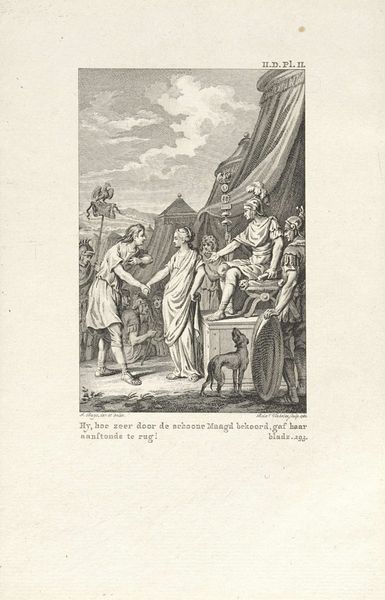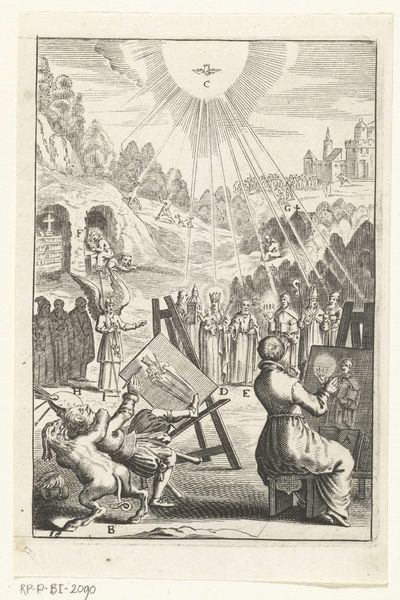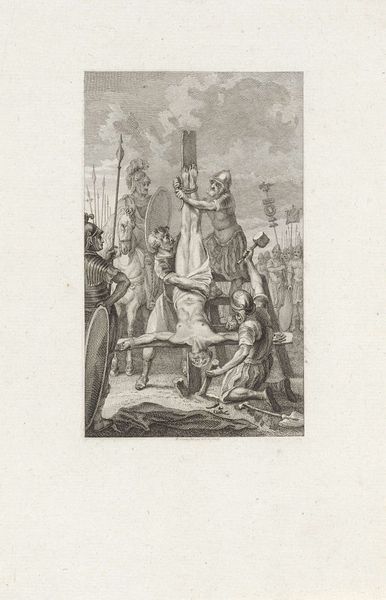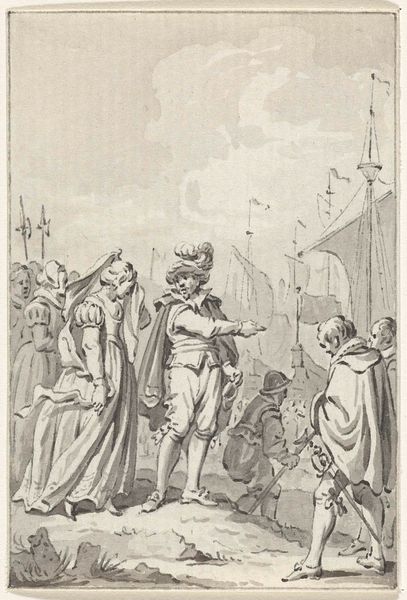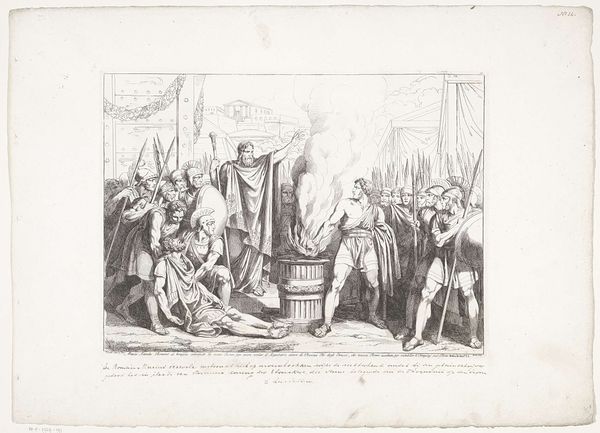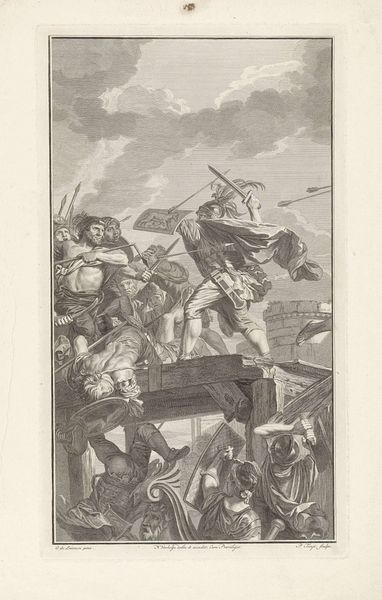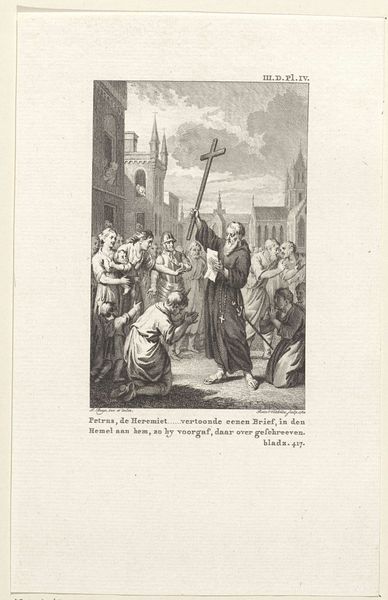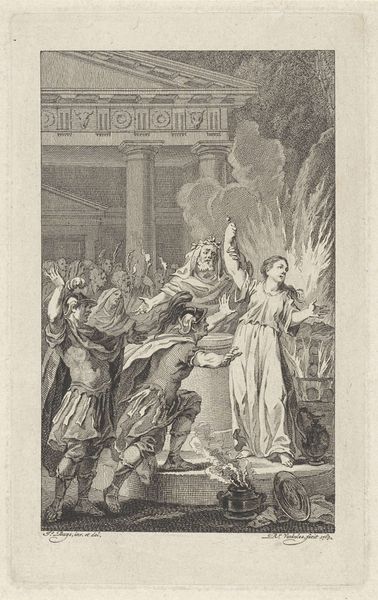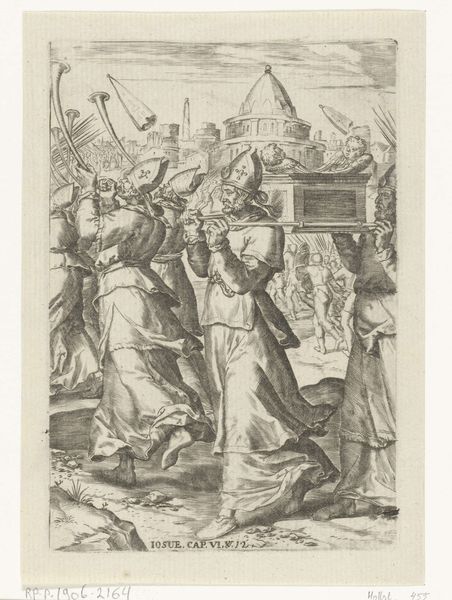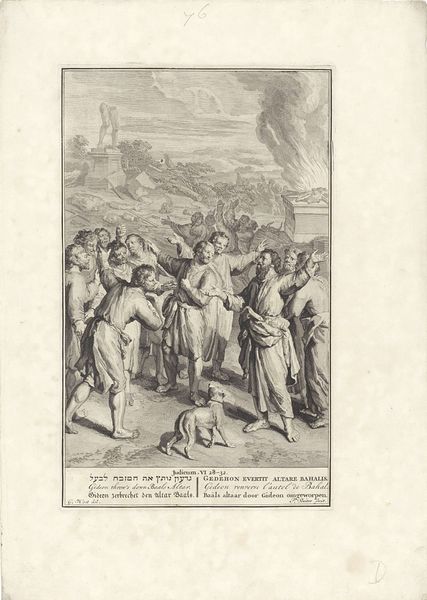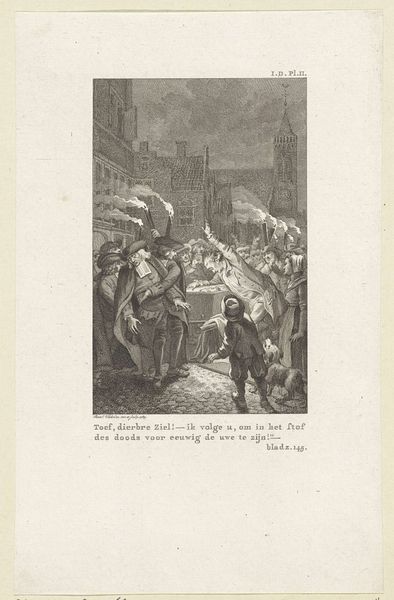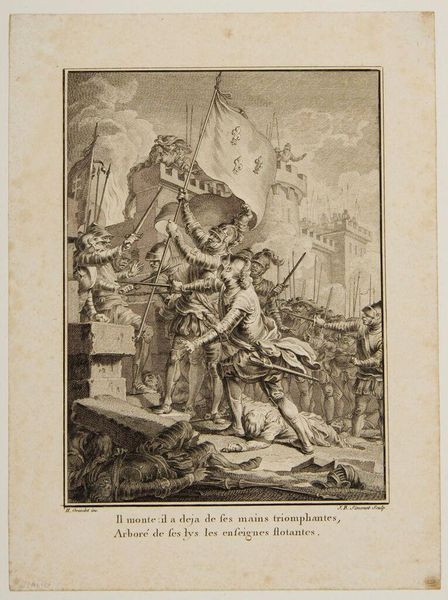
print, engraving
#
neoclacissism
#
allegory
# print
#
old engraving style
#
figuration
#
line
#
history-painting
#
engraving
Dimensions: height 222 mm, width 139 mm
Copyright: Rijks Museum: Open Domain
Curator: Welcome. Before us hangs “Allegory on Faith,” an engraving from 1781 by Caspar Jacobsz. Philips, residing here at the Rijksmuseum. Editor: My initial impression is that of a very deliberate construction. The high contrast and carefully placed figures contribute to the piece's almost theatrical solemnity. What elements are most striking to you regarding its material construction? Curator: Certainly, its reliance on line as the primary means of representing form is interesting. You see a strong use of cross-hatching that allows the artist to define volume. This laborious, meticulous approach also indicates the cost involved in producing this sort of image. Editor: Yes, this intricacy must have signified a higher value for the audience. Thinking about its social and political context, I see in it an intersection of religious belief and Enlightenment ideals. Faith stands triumphantly, seemingly dismissing aspects of older beliefs – see the broken rosaries and religious implements at her feet? Curator: Yes, consider that alongside the specific symbolic weight that building represents. We have clear indications of classical architecture and Masonic symbolism interwoven with more traditional representations of Christian and Jewish faith. It seems Philips is making a statement about synthesizing different religious traditions into a coherent whole. Editor: And notice how Faith dominates the composition—the scale and central placement convey a message about her superiority. But that superiority is, I think, meant to imply that through religious belief people can become a more virtuous citizenry. It speaks directly to late 18th century Dutch societal values. Curator: The technical process then reinforces the socio-political intention; this image wouldn't have circulated widely if the material choices and processes were not attuned to these ideas of value, craft, and intellectual endeavor. Editor: Absolutely. It provides a glimpse into the dialogues, debates, and values that shaped this era. Thank you for shedding light on the processes embedded in its composition. Curator: My pleasure. By acknowledging the circumstances surrounding "Allegory on Faith," we begin to see its significance.
Comments
No comments
Be the first to comment and join the conversation on the ultimate creative platform.
